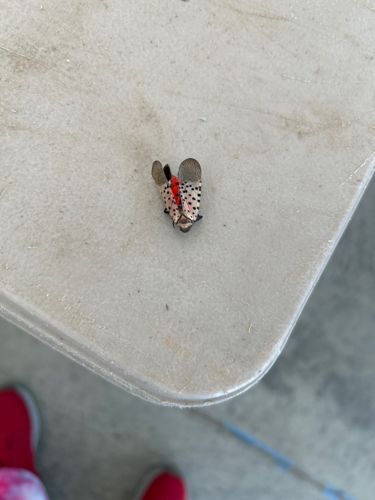Spotted Lanternfly
Scientific Name: Lycorma delicatula
Order & Family: Hemiptera (true bugs), Fulgoridae (planthoppers)
Size: Adults are about 1 inch (2.5 cm) long and 0.5 inch (1.2 cm) wide.

Natural Habitat
Found on various trees and plants, particularly Ailanthus altissima (Tree of Heaven), grapevines, fruit trees, and hardwood trees. They often aggregate on host plants.
Diet & Feeding
Spotted Lanternflies are phloem-feeders. They use their piercing-sucking mouthparts to feed on the sap of a wide variety of plants, causing stress to the host.
Behavior Patterns
They undergo incomplete metamorphosis with four nymphal instars before reaching adulthood. Adults are active from July to December, laying egg masses in the late fall. They are known to congregate in large numbers on host plants. While adults have wings, they are not strong fliers but rather hop short distances. They are also easily spread through human activity, often hitching rides on vehicles and goods.
Risks & Benefits
This is an invasive species in North America and poses a significant risk to agriculture and forestry. They can heavily damage trees, grapevines, and other crops by feeding and secreting large amounts of 'honeydew,' which promotes the growth of sooty mold, blocking photosynthesis and reducing plant vigor. There are no known benefits; they are considered a destructive pest.
Identified on: 9/27/2025